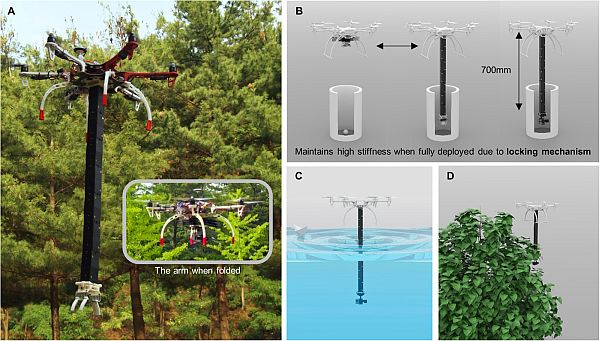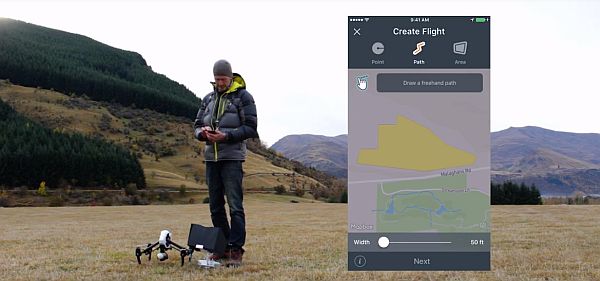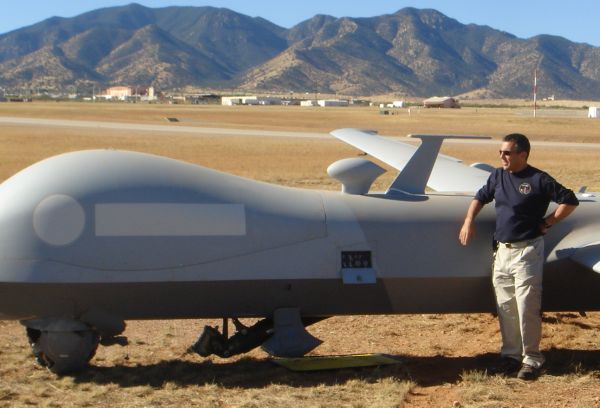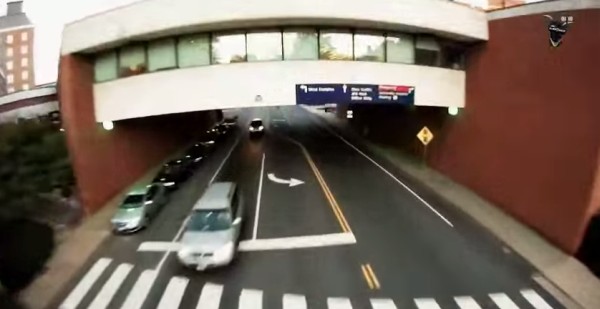Podcast: Play in new window | Download (Duration: 33:19 — 22.9MB)
A new vertiport opens in England, a new military tactical UAS, detect-and-avoid system deployment at a UAS test site, major Army drone swarm test, request for malicious drone legislation, NTSB wants more drones and pilots, DJI suspends business in Russia and Ukraine, and Drone Safety Day.
UAV News
World’s first airport for drones opens in the heart of Coventry
An Air-One vertiport opened in Coventry, England for demonstrations of electric vertical take-off and landing (eVTOL) vehicles. It is planned to remain in Coventry for at least a month then will move to other UK locations, and internationally. The circular vertiport structure with a central takeoff and landing zone includes traveler processing, arrival/departure lounge, baggage scanning, and retail.
Urban-Air Port Limited designs, develops, manufactures, sells, and operates infrastructure for urban air transport such as air taxis and autonomous delivery drones. The company wants to create a ground infrastructure that permits a “zero-emission-mobility ecosystem” and cuts congestion and air pollution. The company plans more than 200 vertiports worldwide over the next five years.
Meet ‘Phoenix Ghost,’ the US Air Force’s new drone perfect for Ukraine’s war with Russia
The Phoenix Ghost Tactical UAS was designed by the US Air Force and manufactured by AEVEX Aerospace. Similar to the Switchblade, it’s believed to be a single-use drone but the Pentagon isn’t providing any details.
NUAIR Partners with CAL Analytics and FAA
Under a Technical Assistance program with the FAA, CAL Analytics will deploy its detect-and-avoid system for low-altitude BVLOS operations at the New York UAS Test Site. NUAIR (the Northeast UAS Airspace Integration Research Alliance) manages the 50-mile Drone Corridor and FAA uncrewed aircraft systems (UAS) Test Site at Griffiss International Airport in New York.
The CAL detect-and-avoid service provides a suite of UTM services including situational awareness, conflict detection, health monitoring, and various weather services. The recent BVLOS Aviation Rulemaking Committee recommended that the FAA develop a methodology for approving safety-critical UTM services for BVLOS.
Army To Test Its Biggest Interactive Drone Swarm Ever Over Utah
The Army’s 2022 Experimental Demonstration Gateway Exercise (EDGE 22) will test up to 30 small networked drones launched from air and ground vehicles. This will include Area-I ALTIUS 600 drones and Raytheon-built Coyote drones. The swarm will use infrared sensors and electronic warfare payloads to detect enemy signals, establish their positions, and send the information back through the network to command posts and manned assault aircraft. The EDGE 22 exercise runs from April 25 to May 12, 2022, at Dugway Proving Ground near Salt Lake City, Utah.
The White House wants to counter the use of drones in the U.S.
The White House issued an action plan to deal with malicious drones: FACT SHEET: The Domestic Counter-Unmanned Aircraft Systems National Action Plan. The plan asks to “adopt legislation to close critical gaps in existing law and policy that currently impede government and law enforcement from protecting the American people and our vital security interests.” The action plan:
- Expands the set of tools and actors who can protect against UAS by reauthorizing and expanding existing counter‑UAS authorities for the Departments of Homeland Security, Justice, Defense, State, as well as the Central Intelligence Agency and NASA in limited situations.
- Expands UAS detection authorities for state, local, territorial, and Tribal (SLTT) law enforcement agencies and critical infrastructure owners and operators.
- Creates a Federally-sponsored pilot program for selected SLTT law enforcement agency participants to perform UAS mitigation activities and permit critical infrastructure owners and operators to purchase authorized equipment to be used by appropriate Federal or SLTT law enforcement agencies to protect their facilities;
- Establishes a list of U.S. Government-authorized detection equipment, approved by Federal security and regulatory agencies, to guide authorized entities in purchasing UAS detection systems
- Establishes oversight and enablement mechanisms to support critical infrastructure owners and operators in purchasing counter-UAS equipment for use by authorized Federal entities or SLTT law enforcement agencies;
- Establishes a National Counter-UAS Training Center to increase training accessibility and promote interagency cross-training and collaboration;
- Creates a Federal UAS incident tracking database
- Establishes a mechanism to coordinate research, development, testing, and evaluation of UAS detection and mitigation technology across the Federal government;
- Enacts a comprehensive criminal statute that sets clear standards for legal and illegal uses, closes loopholes in existing Federal law, and establishes adequate penalties to deter the most serious UAS-related crimes; and
- Enhances cooperation with the international community on counter‑UAS technologies, as well as the systems designed to defeat them.
National Transportation Safety Board Wants To Expand Drone Operations
The NTSB has a history of using drones in their investigations to document accident scenes and process the data using photogrammetry software. Currently, they have five pilots and seven drones but the NTSB wants more pilots and more drones.
Chinese drone maker DJI halts business in Russia and Ukraine
In an April 26 statement (DJI Reassesses Sales Compliance Efforts In Light Of Current Hostilities), the company said:
“DJI is internally reassessing compliance requirements in various jurisdictions. Pending the current review, DJI will temporarily suspend all business activities in Russia and Ukraine. We are engaging with customers, partners and other stakeholders regarding the temporary suspension of business operations in the affected territories.”
DJI
Ukrainian authorities claimed the Russian military was “using DJI products in order to navigate” missile attacks, and said DJI was complicit in Russian attacks. DJI has publicly stated they are opposed to their products being used for military purposes.
Drone Safety Day
The FAA has organized a National Drone Safety Awareness Week each year from 2019 through 2021. This year, however, the FAA is calling for a single Drone Safety Day, Saturday, June 18, 2022, with five focus areas:
- Education – How to safely operate drones and highlighting how drones are being used in education.
- Economics – Highlighting the economic, societal, and safety benefits of using drone technologies.
- Equity – Opening opportunities for all operators.
- Environment – Understanding the environmental and sustainability benefits of drone technologies.
- Emergencies – Learn how drones are used in emergency situations such as: natural disasters, search & rescue, firefighting, public safety, and other uses.
On the National Center for Autonomous Technologies Drone Safety Day page, you can browse all the Drone Safety Day events, sign up to attend, and submit your own event.
UAV Video of the Week
Insane FPV Footage of Downhill Urban Bike Racing in Chile
The Red Bull Valparaíso Cerro Abajo urban downhill bike race is held annually in Chile. The 2-kilometer course goes down narrow staircases and alleyways and even through a house. A video of racer Thomas Slavik cycling through the run was filmed by the Dutch Drone Gods, considered to be among the best FPV drone pilots in the world.







 Justine Harrison is an attorney whose practice includes corporate and aviation law. She’s a multi-engine instrument rated pilot, aircraft owner/operator, and an experimental aircraft builder.
Justine Harrison is an attorney whose practice includes corporate and aviation law. She’s a multi-engine instrument rated pilot, aircraft owner/operator, and an experimental aircraft builder.